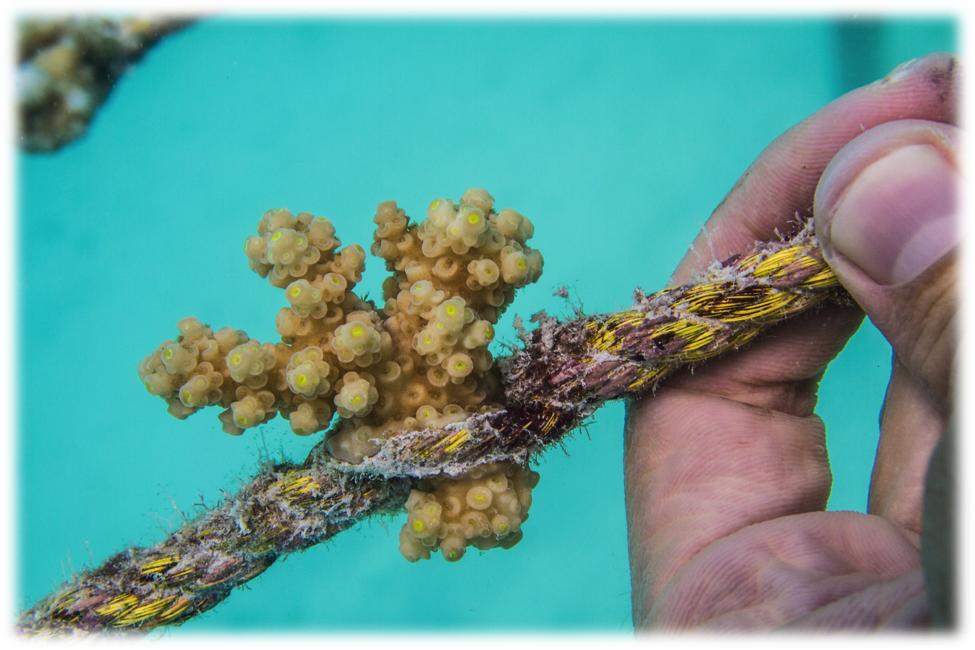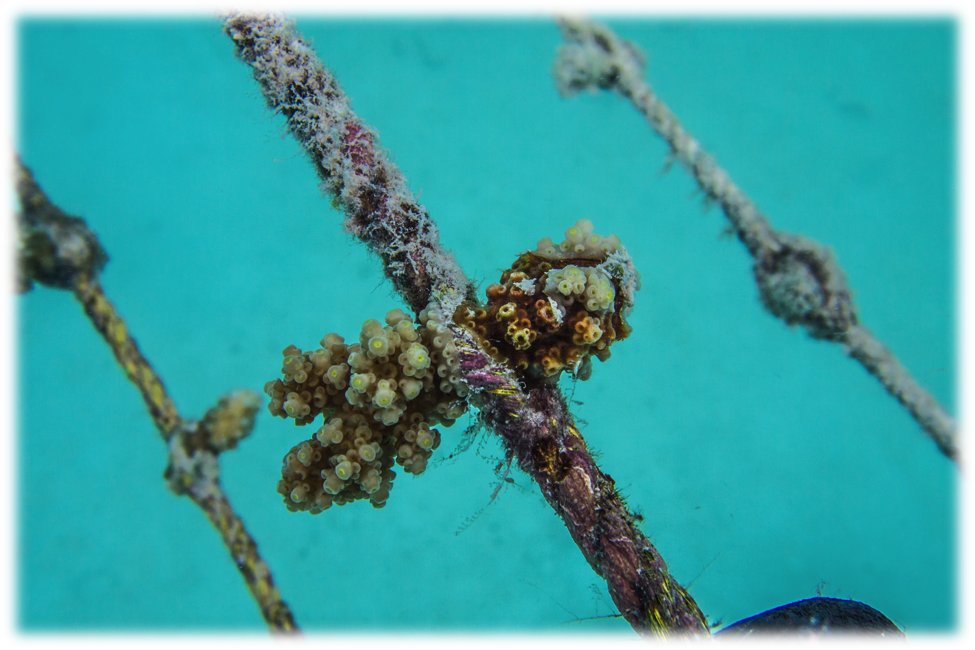
We have reached a huge milestone in our Coral Lines Project here at Gili Lankanfushi! We are delighted to share with you that we just planted our 1000th coral fragment in our mid water nursery! Line number 021 was planted on September 5th by Vaidas and myself following a donation the previous week, which left us with 1044 coral fragments! We were very excited and proud to be placing our 1000th coral in the first nursery which has a 24 line capacity. With 24 lines currently placed, our first nursery section is complete, and with 1132 fragments still alive out of 1195 total corals planted it is, so far, an extremely successful project!
Guests who donate and guests who have come to speak to us firsthand at the resort about the Coral Lines Project will know exactly what Vaidas and myself are getting up to, however, we feel this milestone provides us with a great platform from which to share with our readers here at our Underwater World Blog who haven’t seen the project in the flesh just what kind of work does go into the project.
First we have our guest experience. Upon donation, you are invited to accompany myself or Vaidas to come and plant the corals yourself! We take you to our floating Castaway, with beautiful 360 degree views of the lagoon, and choose a coral species. We then fragment the colony into small pieces and place 50 fragments inside the 5m length of rope. Each fragment is measured, the rope is weighed, and we freedive down to insert your rope into the nursery. Whilst the guest experience is one of the most important aspects of the project (without your kind donations, it simply wouldn’t be possible to pull this project off), we also do a lot of work behind the scenes to keep your corals healthy!
So what actually goes on?



Before we go to plant the lines, there are several important jobs that must be done. Dry work includes cutting the lines to size and prepping equipment, but we must also make sure to keep a constant supply of coral colonies under the floating Castaway, ready to be fragmented. These colonies are what we call ‘Corals of Opportunity’. This means that they are naturally occurring colonies which, if we didn’t remove them from the reef, would die of natural causes. For example, an overturned table coral, or a colony that has been detached from the substrate somehow has very low chances of natural survival. Vaidas and I scout our One Palm Island Reef for any such corals, and transport them using a floating cage to a small colony nursery on the seabed below the floating Castaway, ready for our guests to choose from.


Once lines have been planted, other jobs start to fill our to-do lists. Each week we clean your coral lines. Using SCUBA equipment Vaidas and myself dive down to carefully clean the lines by brushing off any algal build up with a toothbrush, and removing any animals which might bore into the coral tissue such as small clams which have begun to grow on some of the lines. This process currently takes us about 2 hours per week, but is necessary to help increase the growth rate of your corals as it means they are not competing with much faster growing algal species!
As well as cleaning, every 3 months your corals are measured. As the lines hit each 3 month anniversary, Vaidas and I juggle calipers, a slate and a pencil whilst carefully controlling our buoyancy using SCUBA to measure the widest point of each individual coral on the line. Not only do we record the size of the coral, but we also subjectively monitor partial and whole fragment bleaching and mortality along with anecdotal instances of disease and creatures boring into the tissue such as sponges!

This work being complete, we head back to the desk to update our ever growing database we call the ‘Reef Library’. All the measurements and qualitative notes are placed into the Reef Library, from which we can begin to calculate all kinds of statistics. We are currently working on a report using easy to read graphics which we will make available within the next month on our Coral Lines website (http://lines.lankanfushi.com) so that our readers can see what your donations are going towards, the percentage of corals in the nursery still alive, and how much all of our corals are growing through time!
We are also working on planting a purely experimental nursery…
So keep checking our blog for updates !
Article written by Deborah Burn, posted on her behalf.